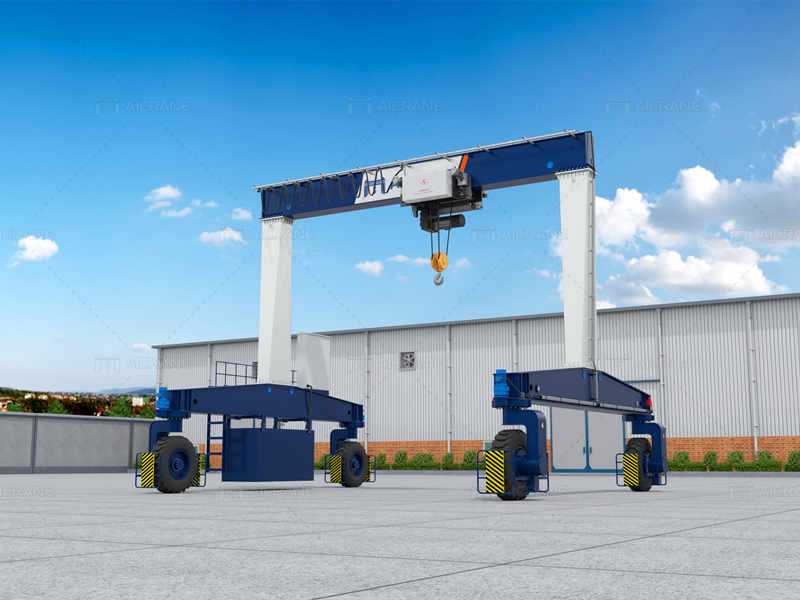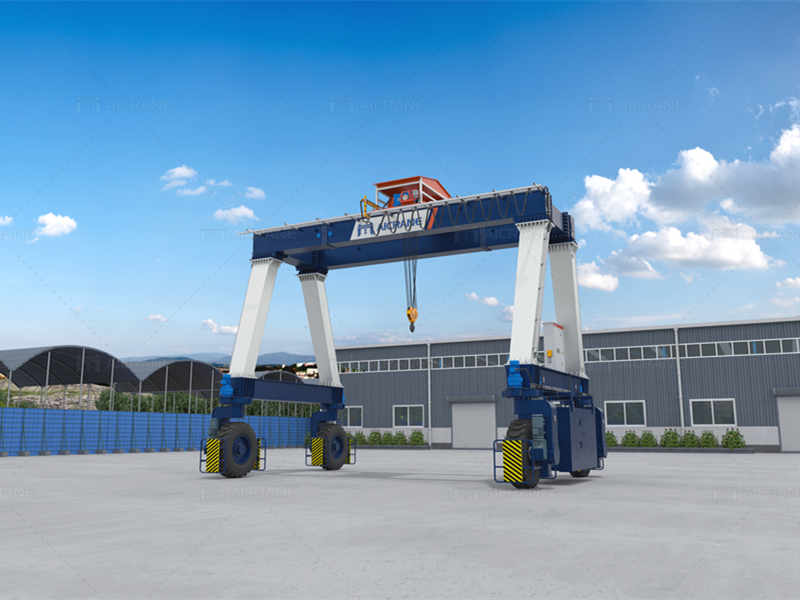Rybber tyred gantry (RTG) cranes are essential equipment in ports and container terminals, providing efficient handling and stacking of containers. With the increasing demand for high-capacity cranes, finding a reasonable RTG crane price can be a challenge. However, by understanding key factors that influence the cost of these cranes, and by adopting a smart purchasing strategy, you can secure an RTG crane at a competitive price. In this article, we’ll explore the factors that affect RTG crane prices and provide practical tips on how to obtain the best value for your investment.

Understand the Components and Features of an RTG Crane
Before seeking the best price, it’s crucial to understand what goes into the pricing of an RTG crane. An RTG crane is made up of various components, each influencing the overall cost. These components include:
Main structure: The steel frame, which provides the crane’s support and durability.
Hoisting mechanism: This includes the winch, hoist, and motor, which determine the crane’s lifting capacity.
Traveling system: RTG cranes are mounted on tires to move along the track.
Control system: The automation and control system, including the operator cabin, remote control, and safety features, significantly affects the price.
Fuel source: RTG cranes can be electric-powered, diesel-powered, or hybrid. Rubber tyred electric gantry cranes tend to be more cost-effective in the long term, but they might have a higher initial investment.
The price can vary significantly based on the combination of these components. For instance, a crane with higher lifting capacity, more advanced automation, or electric power will typically be more expensive than a simpler, diesel-powered model.
Evaluate the Lifting Capacity and Specifications
RTG cranes come in various sizes and lifting capacities, typically ranging from 30 to 50 tons or more. The lifting capacity directly impacts the price of the crane. While smaller cranes might cost less initially, they may not be able to handle the same volume or weight, which could lead to inefficiencies in operations and higher long-term costs. Larger cranes, while more expensive upfront, could provide better value if they align with your operational needs.
To get the most reasonable RTG crane price, carefully assess the specifications based on your operational requirements:
Lifting height: Consider how high the crane needs to lift containers and whether the crane’s height meets your specific needs.
Span: The width of the crane’s coverage area is important, especially if you need to work with larger container stacks.
Stacking capacity: Depending on the number of containers you intend to stack, you may need a container gantry crane with higher stacking capabilities.
A crane with an appropriate lifting capacity and features tailored to your operational requirements will provide better performance and a more reasonable return on investment.
Consider the Type of RTG Crane
There are different types of RTG cranes, including:
Diesel-powered RTG cranes: These cranes are typically used in locations where electric power is not readily afvailable. While they can be less expensive than electric models initially, they are more costly to operate and maintain due to fuel consumption.
Electric RTG cranes: These cranes are more eco-friendly and cost-efficient in the long term, but they have higher upfront costs due to the power supply infrastructure required. They are ideal for environmentally conscious companies looking for long-term savings.
Hybrid RTG cranes: Hybrid cranes combine both electric and diesel power sources. They offer a balance between environmental concerns and operational flexibility, but they can still be more expensive than purely diesel-powered cranes.
Each type has its own advantages, so choosing the one that best fits your operational needs will not only affect the initial price but also your long-term operational costs.

Source RTG Cranes from Reputable Suppliers
One of the most effective ways to ensure you are getting a reasonable RTG crane price is to buy from reputable suppliers. Well-established manufacturers and suppliers like Aicrane Group typically offer a balance between quality and cost, ensuring that you get value for your investment. When choosing suppliers, consider:
Reputation: Research manufacturers with a proven track record of producing reliable, high-quality RTG cranes.
After-sales support: Make sure the supplier offers comprehensive after-sales service, including installation, maintenance, and repair support.
Warranty: A good warranty provides you with peace of mind, ensuring that any issues with the crane are covered, especially for the first few years.
Working with a reputable supplier can sometimes mean a higher initial price, but it will save you money in the long run by avoiding unexpected repair costs and downtime.
Compare Prices from Multiple Suppliers
Getting a reasonable RTG crane price requires careful comparison shopping. Prices can vary between suppliers due to differences in manufacturing costs, shipping fees, and additional services provided. By comparing quotes from multiple suppliers, you can:
Understand the market price range: Compare the prices of similar models to ensure you are getting a competitive rate.
Negotiate better deals: Suppliers may be willing to offer discounts or additional services, such as training or extended warranties, if they know you are considering other options.
Consider total cost of ownership: While one supplier may offer a lower price for the crane itself, another may provide more affordable maintenance or lower operational costs over the lifespan of the crane.
A thorough price comparison, factoring in both the initial price and long-term operational costs, can help you make a more informed purchasing decision.
Factor in Shipping and Installation Costs
When purchasing an RTG crane, it’s important to consider shipping and installation costs in addition to the base price. Shipping heavy machinery can be expensive, especially for international orders, and the installation process can be complex and require specialized labor. Some suppliers include shipping and installation costs in their quotes, while others charge them separately.
To get a reasonable RTG crane price, be sure to account for these additional costs in your budget. If the supplier offers a full-service package, this may be worth the extra cost as it could save time and effort in coordinating separate services.
Consider Used RTG Cranes for Sale
If you are looking to save on the initial investment, you might want to consider purchasing a used RTG crane. Used cranes can offer significant cost savings compared to new ones, but there are some things to consider:
Condition: Check the condition of the crane, including the wear and tear of critical components such as the hoisting mechanism, wheels, and control systems.
Maintenance records: Ensure that the crane has been properly maintained and that it meets safety standards.
Warranty and support: Some used cranes may still be covered by a warranty, and many suppliers offer refurbished models with limited warranties.
Purchasing a used RTG crane can be an excellent way to get a reasonable price without compromising on quality.
Timing Your Purchase
Timing can also impact the price you pay for an RTG crane. Often, manufacturers and suppliers may offer discounts or promotions during certain times of the year, or when they are clearing out old models to make room for new inventory. By timing your purchase strategically, you may be able to secure a better deal.
Getting a reasonable RTG crane price requires a combination of careful research, understanding the crane’s specifications, and selecting the right suppliers. By evaluating the components, features, and the type of crane that best fits your needs, you can make an informed purchasing decision. Additionally, comparing prices from multiple suppliers, factoring in shipping and installation costs, and considering used cranes are all excellent strategies for securing the best possible price. With careful planning and consideration, you can ensure that you get the best value for your investment in an RTG crane.